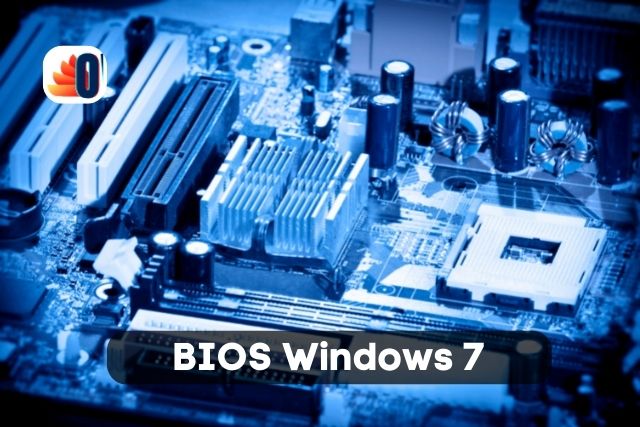How to Access The Motherboard BIOS on Windows 10, 11 & Older Versions? Easy Guide

Do you know How to Access The Motherboard BIOS? If not, don’t worry this article is a complete guide for what you are looking for.
Don’t have an idea about BIOS?
So, BIOS is the Basic Input/Output System of your computer. There are many essential functions of BIOS. For instance, it stores information about your hardware components and the system’s settings.
Likewise, BIOS also saves data about your computer’s operating system. So it is the first thing you will see when you turn on your computer. And automatically load it from memory.
In order to change something in your computer, you will need to look for the BIOS settings where you can access these settings by pressing specific keys during startup.
Contents
How to access the motherboard BIOS?

With modern computers, you’ll likely never need to open the motherboard to make adjustments. But, if you ever have to, the easiest way is to hit F1 or delete (depending on your system) to get to BIOS mode.
You’ll need to use the same key sequence to access it. If your computer doesn’t have a button for this, there should be a combination of keys. If you want to see which keys those are, it’s easy to figure out.
If you’re a regular PC/Laptop user accessing the BIOS isn’t rocket science for you. Here we are giving you some simple ways to access the BIOS settings of your motherboard. You can update your motherboard BIOS using the instructions below.
Note: Ensure you don’t remove or disconnect your motherboard while updating the BIOS settings.
2 Ways to Enter Motherboard BIOS of Windows 10 & 11
Before moving to the steps, let’s discuss what a hotkey is.
The hotkeys of your computer are the physical controls that allow you to quickly access different functions of your computer. These hotkeys may differ between computers and operating systems.
1st Method: Using Hot Key on Startup
Every brand has different special keys for BIOS settings. Below are some keys:
Usually, for BIOS access F1, F2, F10, Delete, and Esc, as used for key combinations like Ctrl + Alt + Esc or Ctrl + Alt + Delete.

Acer BIOS Keys
Acer’s hotkey is F2 and Delete.
Use F1 or press Ctrl + Alt + Esc for older Acer versions at once.
ASRock BIOS Keys
PCs having ASRock motherboards try F2 or Delete to enter the BIOS.
Asus BIOS Keys
F2 is the most common key for Asus Laptops.
Dell BIOS Keys
According to the reports, Dell has 18.5% of the Computer market industry.
So, you can press F2 as the Dell logo appears.
If it doesn’t work, try F1, Delete, F12, or F3.
However, older versions should press Ctrl + Alt + Enter or Delete or Fn + Esc or Fn + F1.
HP BIOS Keys
F10 and Esc are the standard keys for HP machines.

Lenovo BIOS Keys
Press F1 5-10 times on the spot as the LENOVO logo displays.
To summarize, these keys mostly worked in normal conditions. If you’re still getting the issue of entering into BIOS, go to the official manufacturer website and check from there.
You can also try Method 2.
2nd Method: Via Windows 10 Start Menu
Windows 10 provides users with a new Start menu with many potentials. The Start menu is where users get access to the most used features of Windows 10. You can also run installed Apps from the Start menu but don’t go crazy. Too much information in the Start menu will make the menu difficult to navigate sometimes.
But don’t worry; in this step, you’ll find out how to enter into BIOS in a more manageable and safest way. In order to update your motherboard BIOS settings.
As computers become more technologically enhanced, they boot up in seconds. And found no way to press any hotkeys to get into BIOS settings.
For PC users who are not able to access BIOS using hotkeys, there is another way to do it:
Step 1. Open Windows Setting
Click on the “Settings” option on the left panel of the window. You will see the following screen:
Step 2. Open the “Update & Security” Tab
Within this window, you must scroll down to find the “Update & Security” button.
Step 3. From the left panel, Select “Recovery.”
Step 4. Then tap on “Restart now.”
Restart now in Advanced Startup gives you a chance to reboot your computer so it can be configured or restored.
When the screen is back, it will show three options: “Use a device,” “Continue,” “Turn off your PC,” or “Troubleshoot.”.
Step 5: Choose Troubleshoot
Under this section, click “Advanced options,” then select “UEFI Firmware Settings.” It will enter the PC into BIOS.
Step 6: Lastly, Confirm Restart Option
If you follow this method, it will work for Windows 10, Windows 8, or Windows 8.1.

How to Enter in BIOS of Windows 7, Vista, and XP (older versions)
Here is how to update the BIOS settings for users using any of the three versions of Windows XP, Vista, and 7.
A similar way of pressing the above special hotkeys while booting up. Follow the previous steps of 1st method or:
Step # 1. Power off computer
Step # 2. Press the Power On Button
Step # 3. Now press the dedicated BIOS key
These steps will lead you to the BIOS setting for previous Windows.

Conclusion:
In the end, I hope you liked this post about “accessing motherboard BIOS.” If you have questions regarding this article or other technical stuff, you can leave your queries in the comment section.
FAQ
What is the purpose of accessing the BIOS on your computer?
The primary purpose of accessing the BIOS on your computer is to make changes to the hardware settings on your motherboard. Similarly, you can use the BIOS to set up the system to boot from a different hard drive.
How do I access the BIOS on any motherboard?
You must press the F2 key during startup to access the BIOS on your motherboard.
How do I know if I am using the correct version of Windows?
Windows 7, 8, and 10 have different BIOS versions. Therefore, when running the latest version of Windows, the BIOS will be displayed as “Windows 10 (64-bit)”.
What are the different BIOS versions?
The different versions of the BIOS are Windows 95/98/ME, Windows 2000, Windows XP, Windows Vista, Windows 7, Windows 8, and Windows 10.
What is the difference between a UEFI and a BIOS?
BIOS stands for Unified Extensible Firmware Interface. It is a type of firmware that is the default software of the motherboard.
In contrast, BIOS stands for Basic Input Output System.
